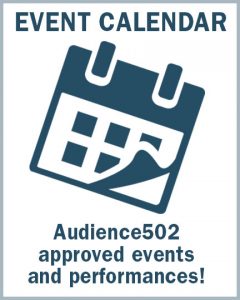 This summer, the Speed Art Museum invites visitors to rediscover one of Louisville’s most quietly influential artists with the exhibition G.C. Coxe: The Dean of Louisville Art. Opening June 7, the show marks the latest in a series of exhibitions curated by Dr. fari nzinga, focused on lifting up the legacies of historically significant Black artists connected to the region.
This summer, the Speed Art Museum invites visitors to rediscover one of Louisville’s most quietly influential artists with the exhibition G.C. Coxe: The Dean of Louisville Art. Opening June 7, the show marks the latest in a series of exhibitions curated by Dr. fari nzinga, focused on lifting up the legacies of historically significant Black artists connected to the region.
“Coxe was someone who always made himself available,” says nzinga. “He wasn’t just a talented artist—he was a mentor, a teacher, a presence. That’s how he earned the nickname ‘The Dean.’ He guided so many others, both professionals and hobbyists, and left a legacy that stretches far beyond what people may realize.”
Born in 1908, G.C. Coxe came of age in an era of limited opportunity for Black artists. He worked for years as a technical illustrator at Fort Knox and built sets for local theaters, all while quietly creating his own body of abstract artwork. It wasn’t until his late 40s—after the University of Louisville officially integrated—that Coxe was able to formally study art. That pursuit never became his profession, but it remained a lifelong passion.
“He never made a living solely through his art,” nzinga explains. “He supported himself and his family through other work. Yet he produced an incredible amount—much of it lost to time, sadly. Floods and even fires destroyed some pieces, but what survives is deeply powerful and finally getting the spotlight it deserves.”
The exhibit draws from a wide array of sources—local collectors, institutions like the Filson Historical Society, and even Coxe’s stepdaughter’s family, who contributed rarely seen works from Florida and California. The show brings together a mix of screen prints, paintings, and works on paper—many of them abstract, a stylistic hallmark that reveals Coxe’s technical background and deeply personal vision.
“People might be surprised by how abstract his work is,” says nzinga. “These are not literal representations. His pieces ask you to interpret, to engage. They’re visual conversations—about his community, his experience, his relationships.”
nzinga compares the viewing experience to reading a challenging novel: “Like Toni Morrison once said, ‘That’s reading, darling.’ This show asks something of you, but it also rewards that attention.”
The exhibition is part of an ongoing effort by the Speed to surface the stories of underrecognized Black artists from the mid-20th century. Previous solo shows in the series have included Dr. Robert L. Douglas—an artist, scholar, and founding director of the University of Louisville’s Pan-African Studies department—and William M. Duffy, a key figure in the Louisville Art Workshop that began forming in 1957.
“The Workshop is this amazing, little-known chapter of local history,” says nzinga. “Before I came to the Speed, I taught African American art history and always cited the Spiral Collective in New York as the first Black visual arts collective in the U.S. But Louisville had something happening even earlier—in the West End, in 1957.”
Coxe played an essential role in that movement, mentoring younger artists and teaching screen printing techniques that were foundational to the Workshop’s early success. His influence extends to celebrated figures like Sam Gilliam, a fellow Louisvillian whose national renown never eclipsed his deep roots in the community.
“Even if you’ve never heard of G.C. Coxe,” nzinga says, “you’ve seen his impact. He helped shape a generation of artists in this city. This exhibition isn’t just about looking back—it’s about understanding where our artistic traditions come from, and who helped make them possible.”
G.C. Coxe: The Dean of Louisville Art opens June 7 and runs through September at the Speed Art Museum. An exhibition catalog will be available in the museum’s gift shop, offering deeper insights into Coxe’s life and work. This is a rare chance to experience the legacy of a visionary who helped lay the groundwork for Louisville’s Black art community—don’t miss it.
For more information, visit SpeedMuseum.org






